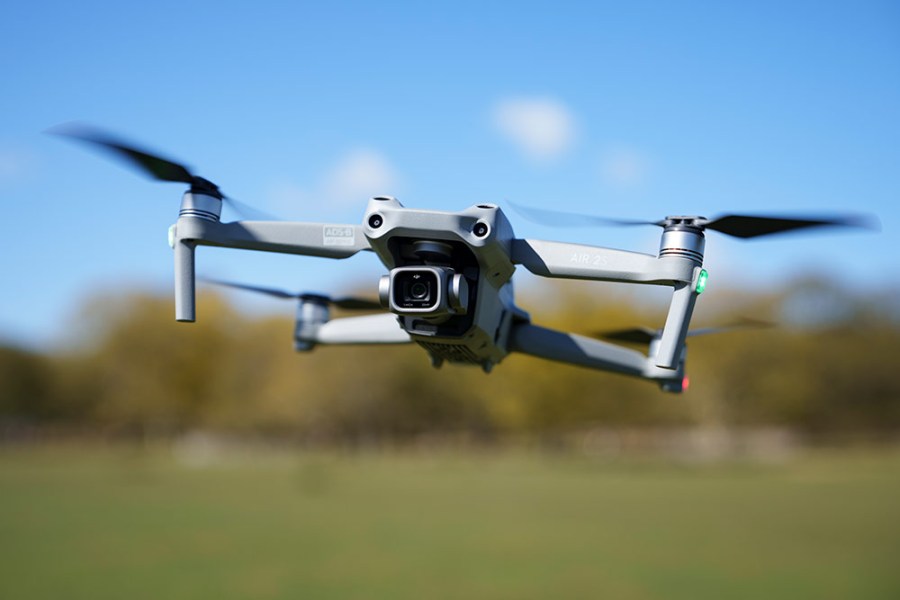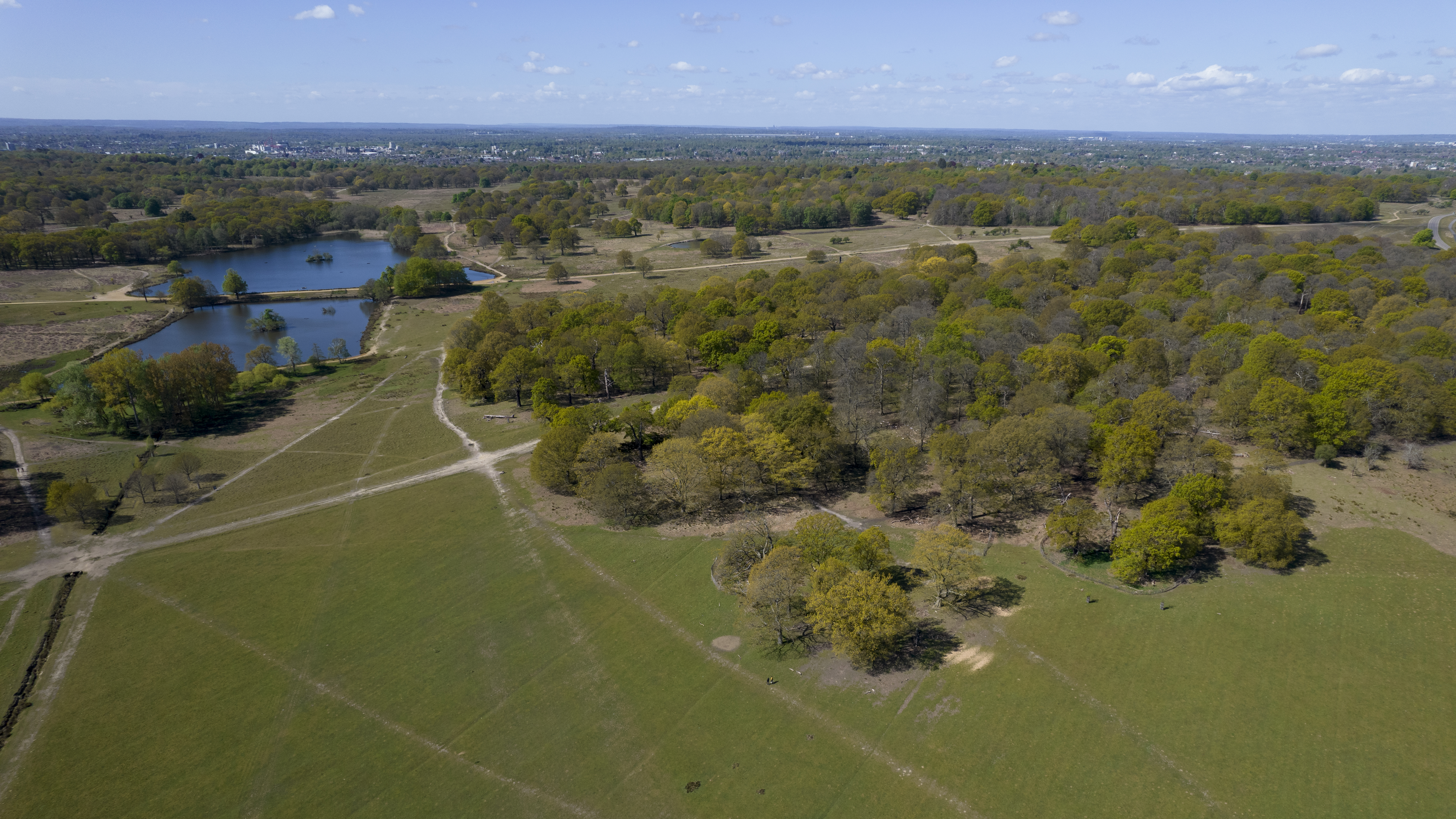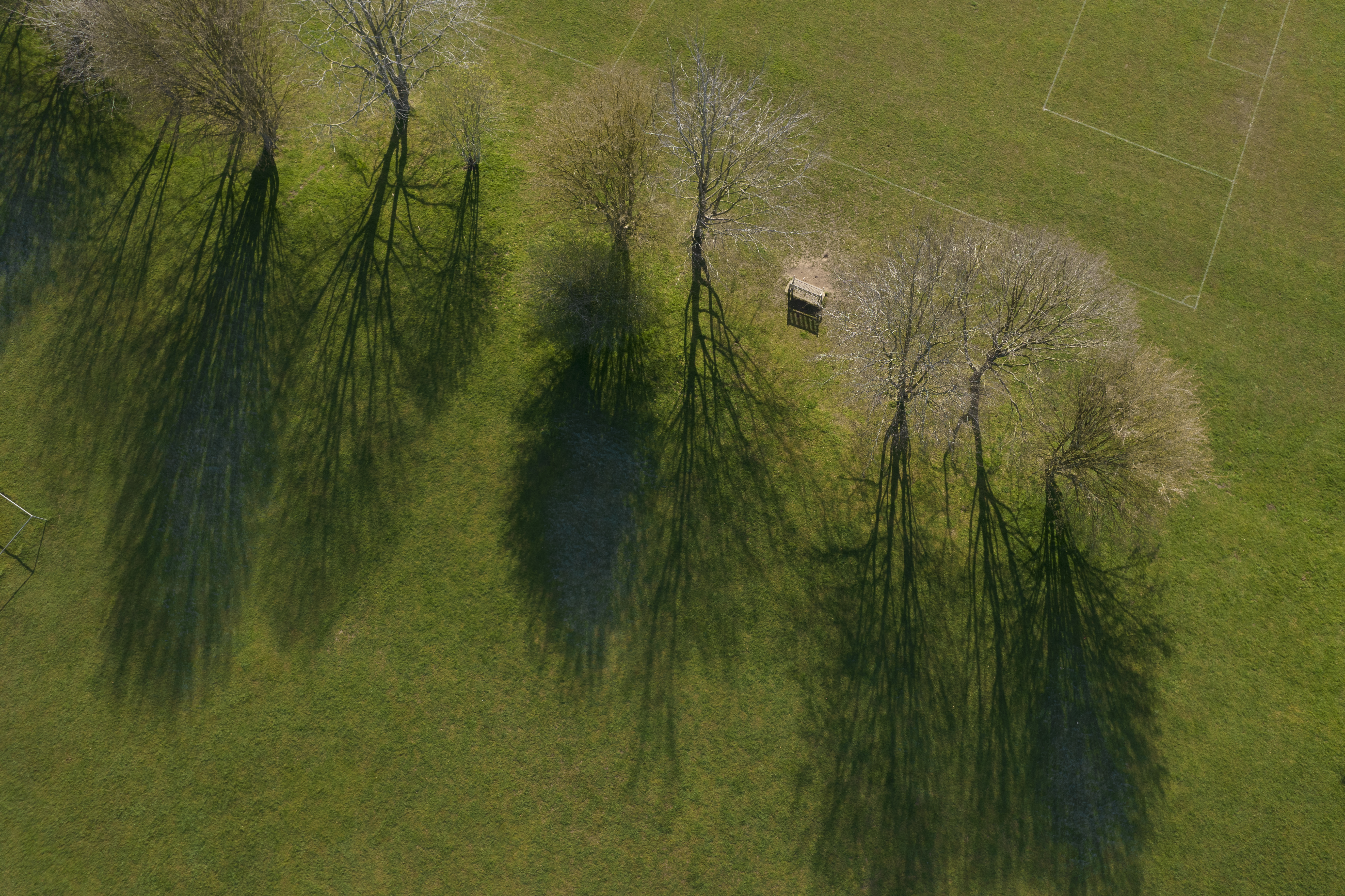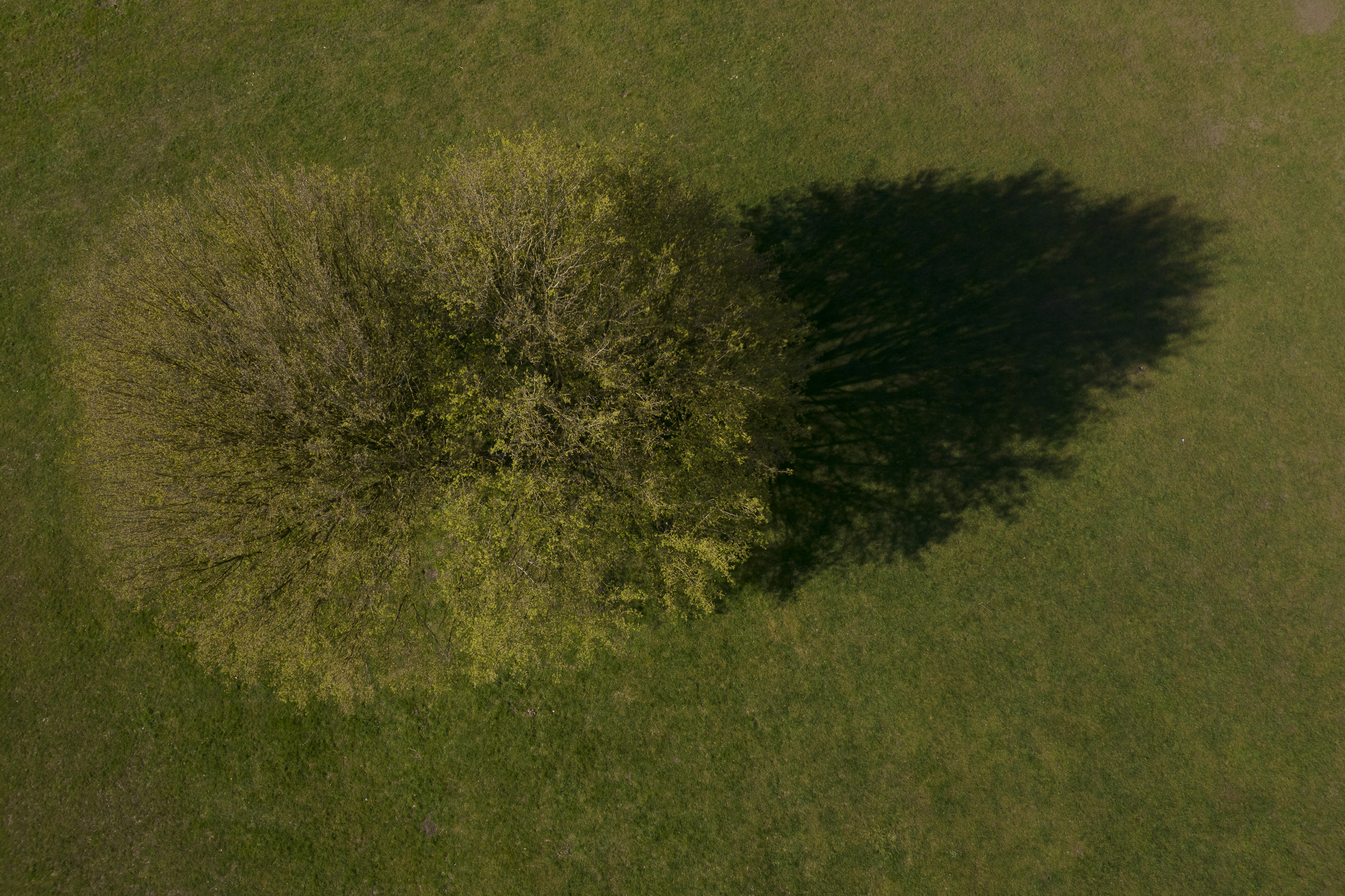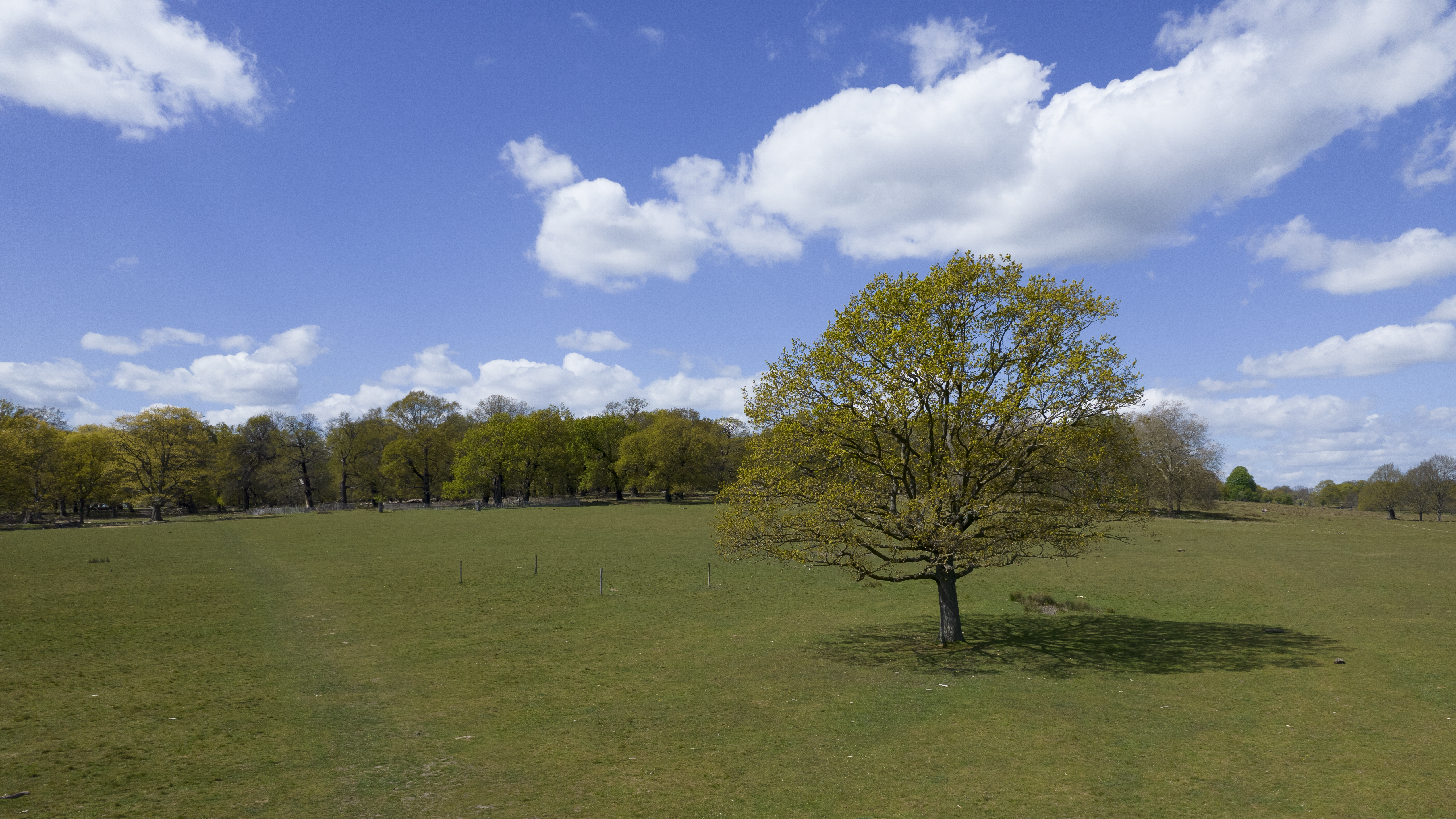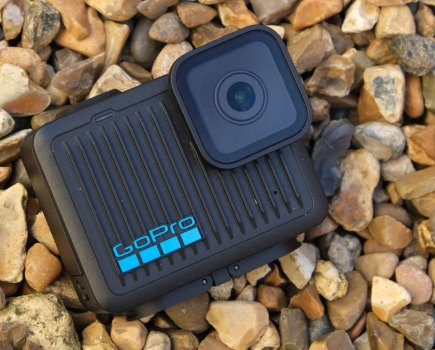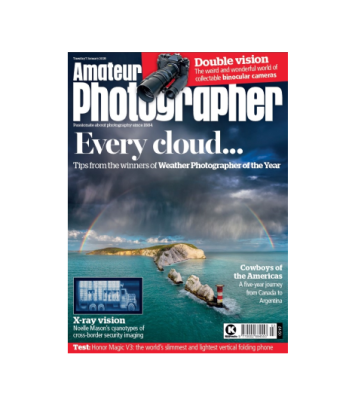DJI has made significant upgrades to the camera for its DJI Air 2S consumer drone, Angela Nicholson has been flying it for our review.
DJI Air 2S at a glance
- £899 / £1169 Fly More Combo
- Drone with integrated camera
- Flight time 31 minutes
- 20Mp 1-inch type CMOS sensor
- Max video resolution of 5.4K (5472×3078) at 24/25/30fps
- 22mm (equivalent) f/2.8 lens
- 3-axis stabilisation
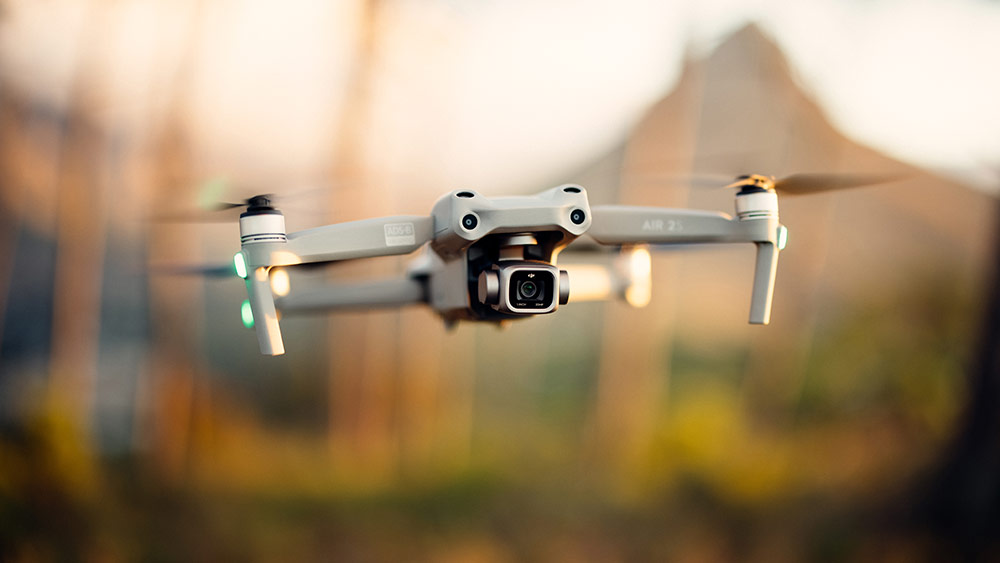
DJI Air 2S Body
The DJI Air 2S makes a significant upgrade on the Mavic Air 2 by stepping up from a 1/2-inch type sensor with 12/48-million pixels to a 20Mp 1-inch type sensor. It can also record 5.4K resolution video in 10-bit D-Log for greater scope for post-capture adjustment (grading), and stills can be recorded in DNG raw as well as Jpeg format.

DJI Air 2S Drone
In addition, the new drone has object avoidance sensors that face forwards, backwards, up and down. Only the sides are unprotected.
The camera has an effective focal length of 22mm and the aperture is fixed at f/2.8. That pretty much assures that low ISO settings are used during day-time flying, but there’s a sensitivity range of ISO 100-12,800 for stills and video, dropping to 100-1600 in 10-Bit D-log mode.
As well as single-shot mode, the Air 2S has a burst-shooting option, Auto Exposure Bracketing over three or five images in 0.7EV steps, a self-timer, an automatic SmartPhoto mode and four HDR Panorama options. On the video front, on top of the 5.4K (5472×3078) maximum resolution at 24/25/30fps, it can shoot 4K (3840×2160) or 2.7K (2688×1512) at 24/25/30/48/50/60 fps, and if you’re happy to drop to Full HD (1920×1080) you can capture footage at up to 120fps for slow-motion playback.

DJI Air 2S folded for transport
There’s also a digital zoom of up to 4x at 4K 30fps, rising to 8x at Full HD at 30fps.
Good to know:
- Easy transport – Like previous DJI Air drones, the Air 2S’s arms fold against the body to make it easier to transport
- Control – The supplied controller holds your smartphone using the DJI Fly app to control the flight and camera. The live view image is on the phone’s screen.
- Filters – The Fly More Combo includes four ND filters, these are essential for the best quality video, they have a bayonet mount
- Sensors – Front, back, up and down facing sensors help the drone avoid objects
Flying the DJI Air 2S
While the DJI Air 2S is stable and easy to fly, there’s a collection of automatic flying and recording modes that simplify capturing great-looking footage during smooth manoeuvres. In addition to DJI’s QuickShots modes which include Rocket, Circle, Dronie, Helix, Boomerang and Asteroid, which have been around for a while, the Air 2S debuts MasterShots mode. When this is selected, the pilot selects the subject by dragging a rectangle around it on the screen of their smartphone in the controller and then after ‘Start’ is tapped, the drone flies a series of manoeuvres automatically, recording as it goes. If the drone is set to 5.4K recording when MasterShots is selected, it defaults to Full HD mode, but it can be reset to 2.7K or 4K.
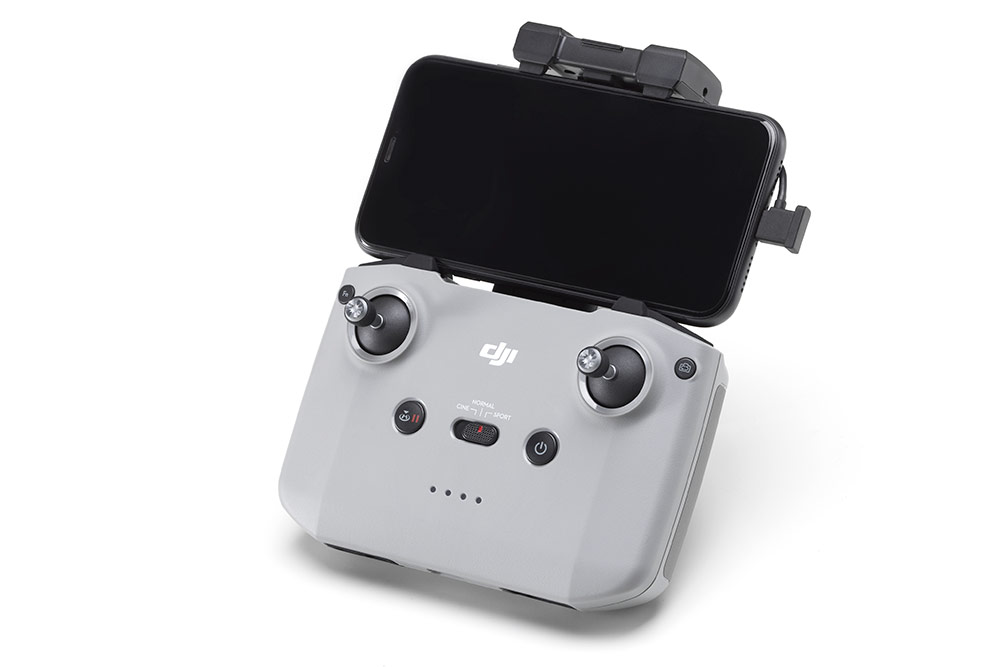
DJI Air 2S remote controller
Once the drone has completed its MasterShots flight of around 3 minutes, it returns to its starting point and the DJI Fly app automatically generates a video of around 15 seconds in length. You can also use the app to create additional videos from the footage, applying one of a number of themes that edit it automatically with a variety of effects, transitions and music. It’s fun, and the end results can resemble the opening sequence of a Netflix series, but the better news is that the original footage is stored on the drone’s internal memory or the inserted microSD card, so you can make your own longer edit.
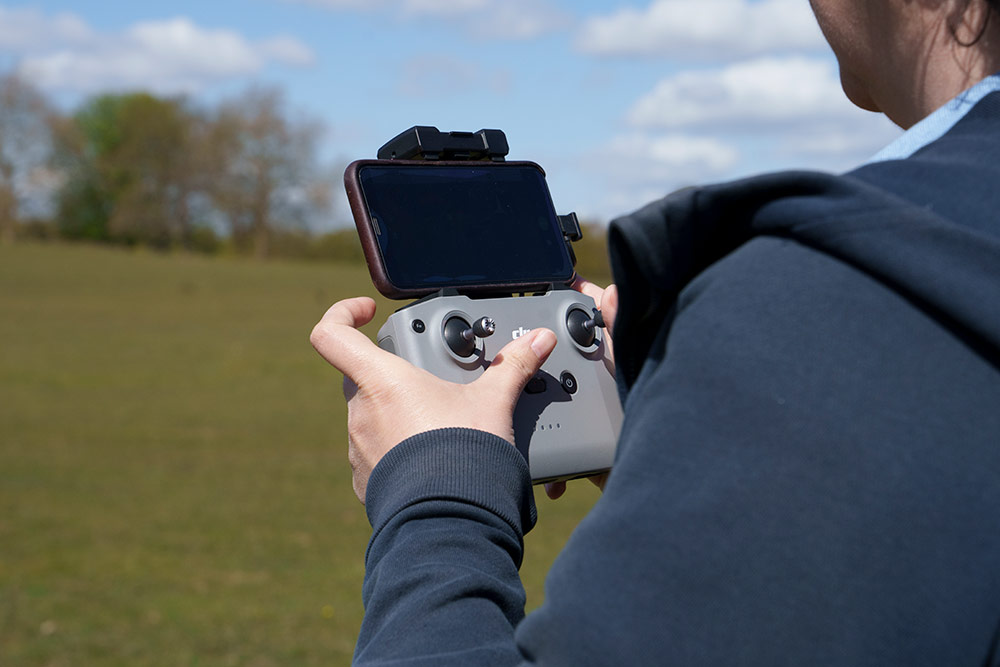
DJI Air 2S remote control. Photo: Angela Nicholson
Drawing a rectangle around the subject on the screen in normal video mode activates the FocusTrack system that can be set to ActiveTrack 4.0, Spotlight 2.0 or Point of Interest 3.0 mode. In ActiveTrack 4.0, mode, the drone follows the subject (humans or vehicles) as it moves, keeping it in the centre of the frame. Spotlight 2.0 mode is similar but the pilot controls the drone’s flightpath while the drone keeps the subject in the frame. Point of Interest 3.0 mode is useful for static subjects and it sets the drone to fly around the subject as it films. All three modes work very well.
However you’re flying the Air 2S, it’s important to remember that it doesn’t have object detection sensors on its sides and those sensors that are present may miss fine twigs or wires, which can result in you brushing off your tree-climbing skills if you’re not careful.
The quality of the stills and video from the Air 2S is excellent, there’s plenty of detail visible and the larger sensor has a significant impact upon the dynamic range. However, the most attractive results are produced in good light. Dull conditions produce drab images and video.
DJI Air 2S Verdict
DJI has improved each generation of its Air drone significantly and the Air 2S makes a worthwhile upgrade on the Mavic Air 2. The Air 2S is both fun and rewarding to fly and while not matching a good DSLR or mirrorless camera, its results are beyond those of an action cam whether you’re shooting stills or video.
It’s also very steady in flight and, even in blustery conditions when you may see it buffeted in the air, the footage is smooth. Also, thanks to the new four-antennae system (up from two), the transmission between the drone and the controller is stable.

Read more DJI reviews, find the best Drones for photography, and have a look at our complete guide to drone photography (with the latest regulations).

